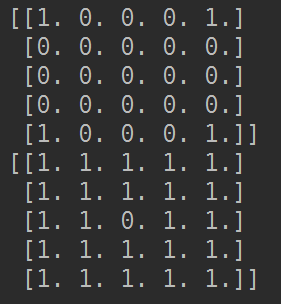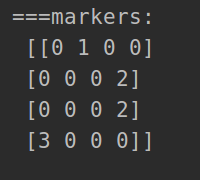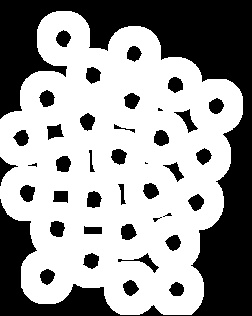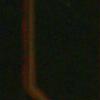一.图像变换dpi
1.示例1
import numpy as np
from PIL import Image
import cv2
def test_dp():path='./gt_1.tif'# img=Image.open(path)# print(img.size)# print(img.info)img=cv2.imread(path)img=Image.fromarray(img)print(img.size)print(img.info)img.save('test.jpg', dpi=(300.0, 300.0), quality=40)
def test_dp2():path='./test.jpg'img=Image.open(path)print(img.size)print(img.info)if __name__ == '__main__':# test_dp()test_dp2()2.示例2
#coding:utf-8
"""
生成的jpg大小在0.95到1.0之间
"""
import os
from PIL import Imagejpg_min_size = 0.95
jpg_max_size = 1.0
jpg_init_quality = 15
jpg_adjust_step = 3tif_list_path = './test/data/tif/002.tif'jpg_list_path = './002.jpg'img = Image.open(tif_list_path)img.convert("L").save(jpg_list_path, quality=jpg_init_quality, dpi=(300.0, 300.0))cur_quality = jpg_init_quality
op_cnt = 0while (os.path.getsize(jpg_list_path) * 1.0 / 1024 / 1024) < jpg_min_size: # unit: metabytescur_quality += jpg_adjust_stepimg.convert("L").save(jpg_list_path, quality=cur_quality, dpi=(300.0, 300.0))op_cnt += 1
while (os.path.getsize(jpg_list_path) * 1.0 / 1024 / 1024) > jpg_max_size: # unit: metabytescur_quality -= jpg_adjust_stepimg.convert("L").save(jpg_list_path, quality=cur_quality, dpi=(300.0, 300.0))op_cnt += 1print('tif:{}->jpg:{},调整次数:{},最终质量:{},最终大小:{}MB'.format(tif_list_path, jpg_list_path, op_cnt, cur_quality, os.path.getsize(jpg_list_path)/1024/1024))
二.直方图均衡化
对图像进行非线性拉伸,重新分配图像像素值,使一定灰度范围内像素值的数量大致相等。输出图像的直方图是一个较平的分段直方图,从而提高图像的对比度。
2.1 灰度图直方图均衡
def Hist():img = cv2.imread('./data/timg.jpg', 0) # 直接读为灰度图像res = cv2.equalizeHist(img)clahe = cv2.createCLAHE(clipLimit=2, tileGridSize=(10, 10))cl1 = clahe.apply(img)plt.subplot(131), plt.imshow(img, 'gray')plt.subplot(132), plt.imshow(res, 'gray')plt.subplot(133), plt.imshow(cl1, 'gray')plt.show()plt.hist(img.ravel(), 256, [0, 256])plt.hist(res.ravel(), 256, [0, 256])plt.hist(cl1.ravel(), 256, [0, 256])plt.show()灰度值的统计图
2.2 彩色图直方图均衡
import cv2image_src = cv2.imread('./lena.png')
r_image, g_image, b_image = cv2.split(image_src)r_image_eq = cv2.equalizeHist(r_image)
g_image_eq = cv2.equalizeHist(g_image)
b_image_eq = cv2.equalizeHist(b_image)image_eq = cv2.merge((r_image_eq, g_image_eq, b_image_eq))
cv2.imwrite('./image_eq.png', image_eq)

三.腐蚀,膨胀
img_path='./image1200/small_disk800/result_result2_800/3272.jpg'
image = cv2.imread(img_path, cv2.IMREAD_GRAYSCALE)
#gray = cv2.cvtColor(image, cv2.COLOR_BGR2GRAY)
im = cv2.threshold(image, 127, 255, cv2.THRESH_BINARY)[1]
plt.imshow(im)
plt.show()
kernel = np.ones((7, 7), np.uint8)
dilation = cv2.dilate(im, kernel, iterations=1)
plt.imshow(dilation)
plt.show()
im = cv2.erode(dilation, kernel, iterations=1)
plt.imshow(im)
plt.show()具体实现
a=np.array([[1,1,0,1,1],[1,1,0,1,1],[0,0,0,0,0],[1,1,0,1,1],[1,1,0,1,1]],dtype=np.float32)
kernel=np.array([[0,1,0],[1,1,1],[0,1,0]],dtype=np.uint8)
b=cv2.erode(a,kernel)
print(b)
c=cv2.dilate(a,kernel)
print(c)
四.分水岭
1.cv2.connectedComponents(gray_img, connectivity=None) 获取连通域
# connectivity 4或8 临近像素: 周围4像素或8像素
import cv2
import numpy as npimg = np.array([[0, 255, 0, 0],[0, 0, 0, 255],[0, 0, 0, 255],[255, 0, 0, 0]], np.uint8)
#获取连通域
ret, markers = cv2.connectedComponents(img)
print('===markers:\n', markers)
分水岭算法的整个过程,主要分为以下几步:
- 对图进行灰度化和二值化得到二值图像
- 通过膨胀得到确定的背景区域,通过距离转换得到确定的前景区域,剩余部分为不确定区域
- 对确定的前景图像进行连接组件处理,得到标记图像
- 根据标记图像对原图像应用分水岭算法,更新标记图像
import cv2
import numpy as np
import matplotlib.pyplot as pltsrc = cv2.imread("./1.png")
# cv2.imshow("input", src)
gray = cv2.cvtColor(src, cv2.COLOR_BGR2GRAY)
plt.hist(gray.ravel(), bins=100, range=[0, 255])
plt.show()
# # cv2.THRESH_OTSU 属于自适应阈值
# # cv2.THRESH_BINARY_INV属于黑白反转
binary = cv2.threshold(gray, 0, 255, cv2.THRESH_BINARY_INV + cv2.THRESH_OTSU)[1]
# cv2.imshow("binary", binary)
cv2.imwrite('binary.jpg', binary)
#
# 形态学操作 得到3x3卷积核
se = cv2.getStructuringElement(cv2.MORPH_RECT, (3, 3))
print('se=', se)# 开运算去除图像中的细小白色噪点
open_img = cv2.morphologyEx(binary, cv2.MORPH_OPEN, se, iterations=2)
print('open_img=', open_img)
# # 膨胀
sure_bg = cv2.dilate(open_img, se, iterations=3)
cv2.imwrite('sure_bg.jpg', sure_bg)
#
# 距离变换,可以得到硬币的中心像素值最大(中心离背景像素最远), 从而白色区域肯定是硬币区域,而且还相互分离,得到确定的前景
dist_transform = cv2.distanceTransform(open_img, cv2.DIST_L2, 5)
sure_fg = cv2.threshold(dist_transform, 0.7 * dist_transform.max(), 255, 0)[1]cv2.imwrite('dist_transform.jpg', dist_transform)
cv2.imwrite('sure_fg.jpg', sure_fg)
#
#背景与前景相减得到不确定区域
sure_fg = np.uint8(sure_fg)
unknown = cv2.subtract(sure_bg, sure_fg)
cv2.imwrite('./unknown.jpg', unknown)# 将前景视为组件.进行连通组件标记 - 发现markers
ret, markers = cv2.connectedComponents(sure_fg)
markers = markers + 1
# print('===markers:\n', markers)
# 设定边缘待分割区域
markers[unknown == 255] = 0markers_copy = markers.copy()
markers_copy[markers == 0] = 150 # 灰色表示不确定区域
markers_copy[markers == 1] = 0 # 黑色表示背景
markers_copy[markers > 1] = 255 # 白色表示前景
markers_copy = np.uint8(markers_copy)
cv2.imwrite('./markers_copy.jpg', markers_copy)# 分水岭分割
markers = cv2.watershed(src, markers)
src[markers == -1] = [0, 0, 255]
cv2.imwrite('result.jpg', src)

1.原图 2.二值化


3.直方图 4.距离变换图


5.背景图 6.前景图



7.未知区域(背景减前景) 8.markers图(用来标记开始淹没的像素点) 9.结果图
五.模板匹配
cv2.matchTemplate匹配函数返回的是一副灰度图,最白的地方表示最大的匹配。使用cv2.minMaxLoc()函数可以得到最大匹配值的坐标,以这个点为左上角角点,模板的宽和高画矩形就是匹配的位置了。
lena_path='./lena.png'face_path='./face.png'img = cv2.imread(lena_path, 0)print(img.shape)template = cv2.imread(face_path, 0)print(template.shape)h, w = template.shape[:2]res = cv2.matchTemplate(img, template, cv2.TM_CCOEFF_NORMED)print('res=',res.shape)cv2.imshow('res',res)cv2.waitKey(0)min_val, max_val, min_loc, max_loc = cv2.minMaxLoc(res)print('max_val=',max_val)left_top = max_loc # 左上角right_bottom = (left_top[0] + w, left_top[1] + h) # 右下角cv2.rectangle(img, left_top, right_bottom, 255, 2) # 画出矩形位置cv2.imwrite('template.jpg',img)
res








六.直线检测
def compute_time_deco(function):def warpper(*args, **kwargs):st = time.time()res = function(*args, **kwargs)print('{}:spend time:{}'.format(function.__name__, time.time() - st))return resreturn warpper@compute_time_deco
def line_detection_center(image, name='./tmp.jpg'):"""得到最长直线的中心输入:图片输出:图片最长直线的中心"""if image.shape[-1] == 3:gray = cv2.cvtColor(image, cv2.COLOR_BGR2GRAY)else:gray = imagetry:img_bin = cv2.threshold(gray, 128, 255,cv2.THRESH_BINARY_INV | cv2.THRESH_OTSU)[1]kernel_length = max(np.array(img_bin).shape[1] // 20, 1)hori_kernel = cv2.getStructuringElement(cv2.MORPH_RECT, (kernel_length, 1))# Morphological operation to detect horizontal lines from an imageimg_temp2 = cv2.erode(img_bin, hori_kernel, iterations=1)horizontal_lines_img = cv2.dilate(img_temp2, hori_kernel, iterations=2)#找最长的直线cnts = cv2.findContours(horizontal_lines_img, cv2.RETR_EXTERNAL, cv2.CHAIN_APPROX_SIMPLE)contours = cnts[0] if imutils.is_cv2() else cnts[1]c_ = sorted(contours, key=cv2.contourArea, reverse=True)long_line_cnt = np.squeeze(c_[0])x, y, w, h = cv2.boundingRect(long_line_cnt)debug = Trueif debug:# cv2.imwrite(name, horizontal_lines_img)# cv2.rectangle(image, (x, y), (x+w,y+h), color=(0, 0, 255), thickness=3)cv2.circle(img, (x+w//2, y+h//2), radius=10, color=(255, 0, 0), thickness=5)cv2.imwrite(name, image)# print('y+h//2:', y+h//2)return y+h//2except:return None![]()

案例:找发票的线
#coding:utf-8
"""
fzh created on 2020/04/24
"""import cv2
import numpy as np
import imutils
import os
import pyzbar.pyzbar as pyzbar
import shutil
from scipy.signal import find_peaks, peak_widths
import timedebug_show = Truedef compute_time_deco(function):def warpper(*args, **kwargs):st = time.time()res = function(*args, **kwargs)print('{}:spend time:{}'.format(function.__name__, time.time() - st))return resreturn warpperdef get_contours_point(thresh,mode=0):"""0代表水平1代表垂直"""points = []cnts = cv2.findContours(thresh, cv2.RETR_EXTERNAL, cv2.CHAIN_APPROX_SIMPLE)contours = cnts[0] if imutils.is_cv2() else cnts[1]contours = sorted(contours, key=cv2.contourArea, reverse=True)for contour in contours:x, y, w, h = cv2.boundingRect(contour)x1, y1, x2, y2 = x, y, x + w, y + hpoints.append([x1,y1,x2,y2])points = np.array(points)if len(points):if mode ==1 :#垂直return pointselse:#水平return points[points[:,1].argsort()]else:return points
##横线的中心处于10个像素以内就认为是同一高度,则进行合并
def merge_lines(points):centers = []for point in points:x1, y1, x2, y2 = pointcenters.append([(x1+x2)//2, (y1+y2)//2])opt = [0] * len(centers)for i in range(1, len(centers)):if abs(centers[i][-1] - centers[i - 1][-1]) <= 10:opt[i] = 1opt.append(0)index = [j for j in range(len(opt)) if opt[j] == 0]# print('index:', index)new_points = []for k in range(len(index) - 1):x1,y1,x2,y2 = min(points[index[k]:index[k + 1]][:,0]),min(points[index[k]:index[k + 1]][:,1]),\max(points[index[k]:index[k + 1]][:,-2]),max(points[index[k]:index[k + 1]][:,-1])new_points.append([x1,y1,x2,y2])# print(new_points)new_points = np.array(new_points)max_length_point = new_points[(new_points[:, -2] - new_points[:, 0]).argsort()[::-1]][0]fin_points = new_points[(new_points[:,-2]-new_points[:,0]).argsort()[::-1]][:5]fin_points = fin_points[fin_points[:, 1].argsort()]fix_points = []#最长线替代剩余线for point in fin_points:_, y1, _, y2 = pointfix_points.append([max_length_point[0], (y1+y2)//2, max_length_point[2], (y1+y2)//2])return fix_points
@compute_time_deco
def get_lines(img, name):"""输入图片返回水平线点 竖直线点 交点"""gray = cv2.cvtColor(img, cv2.COLOR_BGR2GRAY) # 灰度图片# ret, binary = cv2.threshold(gray, 0, 255, cv2.THRESH_BINARY | cv2.THRESH_OTSU) # 全局自适应阈值dst = cv2.adaptiveThreshold(gray, 255, cv2.ADAPTIVE_THRESH_GAUSSIAN_C, cv2.THRESH_BINARY, 101, 20)veri_kernel = cv2.getStructuringElement(cv2.MORPH_RECT, (1, 30))veri_dilated = cv2.dilate(dst, veri_kernel, iterations=2)veri_eroded = cv2.erode(veri_dilated, veri_kernel, iterations=2)veri_thresh = cv2.adaptiveThreshold(veri_eroded, 255, cv2.ADAPTIVE_THRESH_GAUSSIAN_C, cv2.THRESH_BINARY_INV, 11, 5)# cv2.imwrite('./veri_thresh.jpg', veri_thresh)hori_kernel = cv2.getStructuringElement(cv2.MORPH_RECT, (30, 1))hori_dilated = cv2.dilate(dst, hori_kernel, iterations=2)hori_eroded = cv2.erode(hori_dilated, hori_kernel, iterations=2)hori_thresh = cv2.adaptiveThreshold(hori_eroded, 255, cv2.ADAPTIVE_THRESH_GAUSSIAN_C, cv2.THRESH_BINARY_INV, 11, 5)# cv2.imwrite('./hori_thresh.jpg', hori_thresh)hori_points = get_contours_point(hori_thresh, mode=0) # 0代表水平veri_points = get_contours_point(veri_thresh, mode=1) # 1代表垂直hori_points = merge_lines(hori_points)cross_points = []delta = 10for veri_point in veri_points:vx1, vy1, vx2, vy2 = veri_pointfor hori_point in hori_points:hx1, hy1, hx2, hy2 = hori_pointif (hx1 - delta) <= vx1 <= (hx2 + delta) and (vy1 - delta) <= hy1 <= (vy2 + delta):cross_points.append((int(vx1), int(hy1)))cross_points = np.array(cross_points)# print('所有交点:', cross_points)print('交点总计:', len(cross_points))if debug_show:for i, point in enumerate(hori_points):# if i<1:x1, y1, x2, y2 = pointcv2.rectangle(img, (x1, y1), (x2, y2), color=(255, 0, 0), thickness=2)for i, point in enumerate(veri_points):# if i<1:x1, y1, x2, y2 = pointcv2.rectangle(img, (x1, y1), (x2, y2), color=(0, 255, 0), thickness=2)if len(cross_points):s = np.sum(cross_points, axis=1)table_x1, table_y1 = cross_points[np.argmin(s)]table_x2, table_y2 = cross_points[np.argmax(s)]cv2.circle(img, (table_x1, table_y1), 10, (0, 0, 255), thickness=2)cv2.circle(img, (table_x2, table_y2), 10, (0, 0, 255), thickness=2)cv2.imwrite(name, img)return hori_points, veri_points, cross_pointsdef test_lines():path = './电子发票方向矫正后的'output_path ='./电子发票画边和角点'if not os.path.exists(output_path):os.mkdir(output_path)imgs_list_path = [os.path.join(path,i) for i in os.listdir(path)]for i, img_list_path in enumerate(imgs_list_path):# if i<1:# img_list_path = './电子发票方向矫正后的/test.png'img = cv2.imread(img_list_path)name = os.path.join(output_path, img_list_path.split('/')[-1])get_lines(img, name)if __name__ == '__main__':test_lines()










)











